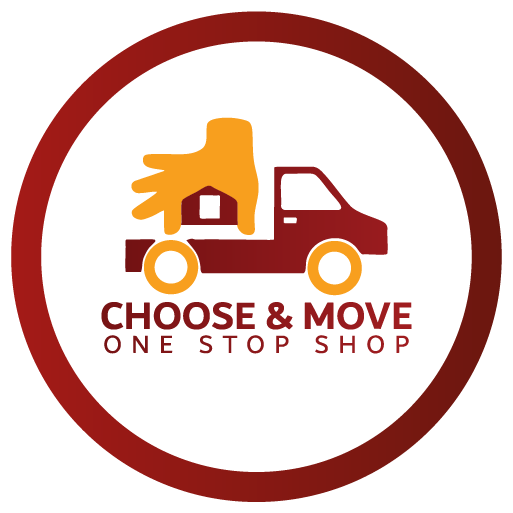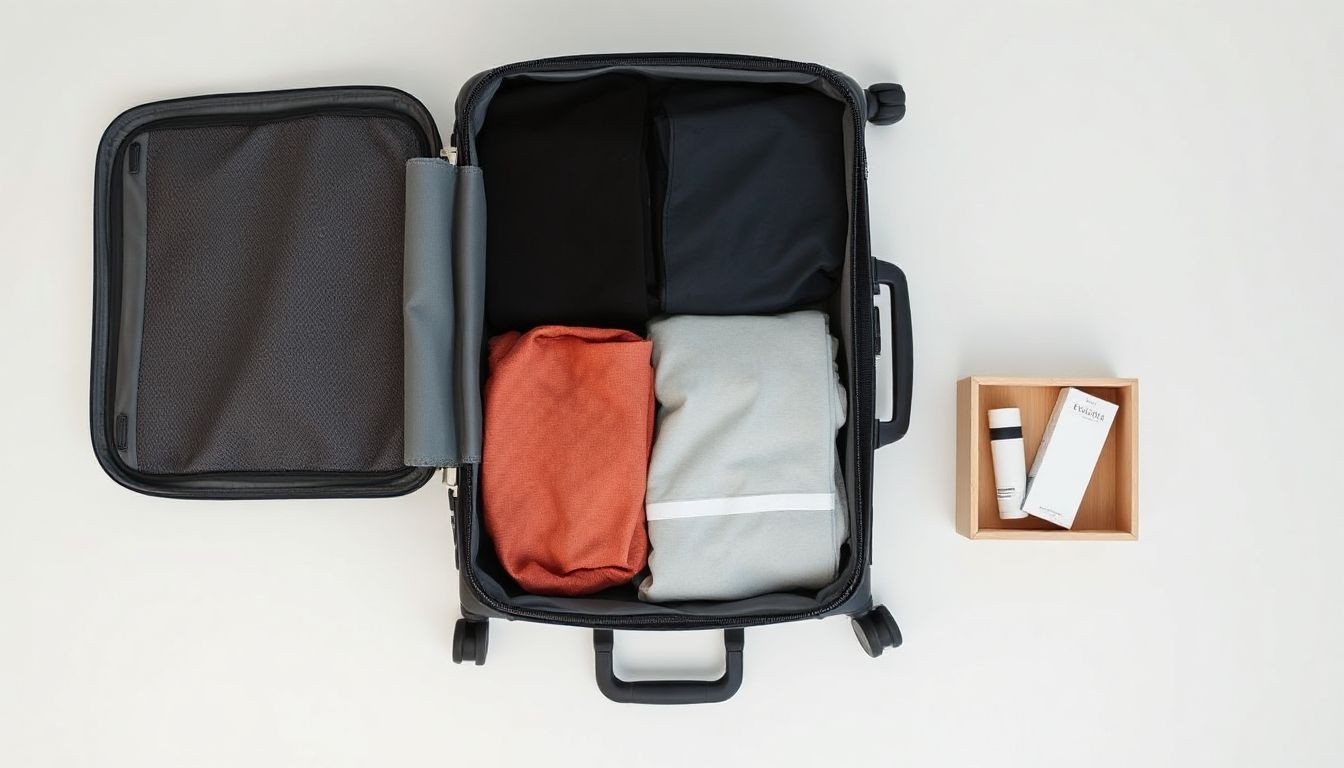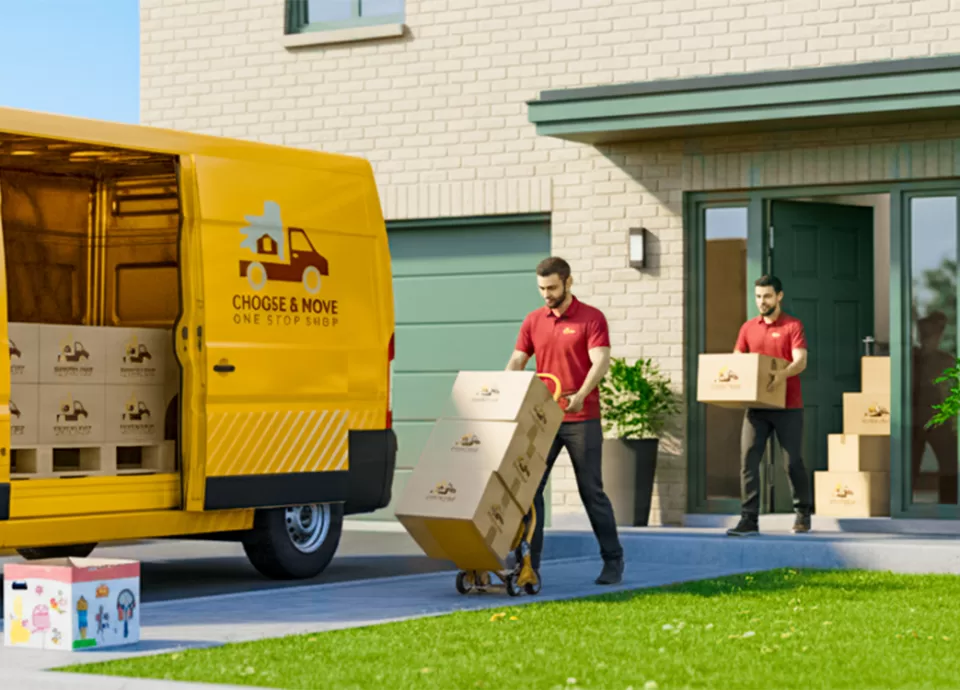Moving can feel like a big mountain to climb. Often, it brings worry and a feeling that things are out of control. The sheer number of your items, getting them from one place to another, and thinking about a new home can add a lot of stress. But by using smart packing strategies, you can turn a tough job into one you can handle. This guide will give you the knowledge and tips to pack better. It helps cut down on moving day craziness and ensures a smoother trip to your new place.
A move without stress starts with careful planning. Your packing method is key. Forget last-minute rushing. A smart way that puts organization first, clearing out old items, and using the right tools makes a huge difference. This means knowing not just how to pack, but when and what to pack with. By breaking the work into easy steps, you can deal with each room and group of items one by one. This stops you from feeling swamped.
In the end, packing well is more than just getting your stuff from here to there. It sets you up for a calm and neat arrival at your new spot. This guide will walk you through the key steps. From finding supplies to sealing the last box, it offers ideas that will help you pack efficiently. Enjoy a truly stress-free move.
Declutter Before You Pack: The First Step to Efficiency
Reducing the stuff you own is the most important step. Do this even before you start packing. Imagine moving only the items you truly love and use. This makes your whole move much lighter. It saves you time, money, and lots of effort.
Sort and Purge: What to Keep, Donate, or Toss
Start in one area, like a closet or a drawer. Take everything out. Now, look at each item and make a quick choice. Does it spark joy? Have you used it in the last year? If not, it might be time to let it go. Create three piles: Keep, Donate, or Toss.
For clothes, if it doesn’t fit or you haven’t worn it, it’s probably ready to go. With books, consider if you’ll read them again or if they hold special meaning. Kitchenware often collects duplicates or items rarely used. Be firm with yourself. A lighter load means less to pack, less to move, and less to unpack.
The “One In, One Out” Rule for Future Moves
This simple rule can change your packing habits for good. For every new item you bring into your home, get rid of an old one. This stops clutter from building up over time. You can start this practice even now as you pack.
As you sort, identify items you no longer need. This helps you apply the “one in, one out” mindset. It trains you to think about how much stuff you truly want to keep. This strategy makes future moves even easier.
Gather the Right Packing Supplies: Tools for Success
Having the proper materials is vital for packing well. Using the right supplies stops your things from getting broken. It also saves you a lot of time on moving day. Don’t skip this important step.
Essential Boxes, Tape, and Padding
First, get strong moving boxes in different sizes. Small boxes are best for heavy items like books or canned food. Medium and large boxes work well for lighter, bulkier things like linens or pillows. Don’t forget wardrobe boxes with a bar to hang clothes directly. This saves you tons of time.
You’ll need high-quality packing tape and a tape dispenser. This makes sealing boxes fast and easy. For padding, use bubble wrap for fragile items. Packing paper or even old newspapers protect dishes and glassware. Don’t forget that towels, blankets, or even clothes can work as good padding too. They fill empty spaces and save on extra supplies.
Specialty Items: Protecting Fragiles and Valuables
Some items need extra care. Glassware should be wrapped individually. Make sure to stuff the inside of cups and bowls with paper. Electronics need special attention; take photos of how wires connect before unplugging them. Label cords clearly. Use original boxes if you still have them for screens and delicate devices.
Artwork and mirrors need special mirror boxes or custom wrapping. Large, flat items can shatter easily. For very valuable items, consider moving them yourself. Jewelry or important documents should stay with you. They are too important to trust to a moving truck.
Smart Packing Strategies for Every Room
Every room has its own packing puzzles. But with the right approach, you can tackle them all. These smart tips make packing each area much simpler. They help you avoid common moving day problems.
Kitchen Chaos Containment: Packing Pots, Pans, and Dishes
The kitchen often holds the most fragile items. Wrap each dish separately in packing paper or bubble wrap. Place them vertically in boxes, like records, for better protection. This stops them from moving around. Stack plates with paper in between each one.
Nest pots and pans together to save space. Cushion them with towels or crumpled paper. For cutlery, wrap bundles in plastic wrap or paper before boxing them. Small appliances should be packed securely, perhaps in their original boxes if you still have them. Label kitchen boxes very clearly.
Bedroom and Closet Optimization: Clothes, Linens, and Personal Items
Wardrobe boxes are your best friend for clothes on hangers. Just move them from your closet rod to the box. For folded clothes, roll them to save space and prevent wrinkles. Use luggage or duffel bags for clothes you’ll need right away. Linens, like sheets and towels, can go into large boxes. They also make great soft padding for other items.
Personal items and sentimental things need gentle care. Pack jewelry in small pouches or cases. Keep important papers in a separate, secure box you carry yourself. Use small containers for things like hair ties and socks. Keep these items together for easy finding later.
Living Room and Office Organization: Electronics, Books, and Decor
Electronics can be tricky. Before unplugging, snap a photo of the back of your TV or computer. This helps you reconnect everything fast. Label all cords to their devices. Protect screens with soft cloths or bubble wrap. Always pack electronics in sturdy boxes.
Books get heavy fast. Use small boxes for books to avoid crushing the bottom out of larger ones. Fill any empty spaces in book boxes with soft items. For decorative items and picture frames, wrap them individually in paper or bubble wrap. Place them snugly in boxes. Use a lot of padding to fill any gaps.
Labeling and Inventory: Your Roadmap to Unpacking
Clear labels and a simple inventory system are vital. They cut down on stress after the move. Knowing what’s in each box saves you time and frustration. It’s like having a map for your new home.
The Art of Effective Labeling: What to Include
Don’t just write “kitchen” on a box. Be specific. Write the room where the box belongs (e.g., “Master Bedroom,” “Kitchen”). Then, list the main contents (e.g., “Pots & Pans,” “Linens,” “Books – Living Room”). Add keywords like “Fragile” or “Open First” when needed.
Consider using a color-coding system. A different colored tape or sticker for each room makes it easy to spot. This helps movers put boxes in the right place quickly. It speeds up your unpacking, too.
Creating a Simple Inventory System
A basic inventory list is a lifesaver. You can use a notebook, a simple spreadsheet, or a mobile app. Number each box as you seal it. Then, write down the box number and its detailed contents on your list. For example, “Box #17 – Kitchen: Coffee Maker, Toaster, Mugs.”
This list helps you find specific items when you need them most. It also lets you check if all your boxes made it to the new home. Losing a box is less likely when you have a clear record. This system gives you peace of mind.
Packing Day and Beyond: Final Touches for a Smooth Transition
As packing wraps up, think about moving day itself. These final steps make sure everything goes off without a hitch. You want to arrive at your new place ready to relax.
The “Essentials” Box: Your First Day Survival Kit
Pack one special box with things you’ll need right away. This “essentials” box is your first night’s best friend. It should have toiletries, a change of clothes for everyone, basic medications, and pet supplies. Don’t forget phone chargers and important documents.
Include some basic tools, like a screwdriver or box cutter, for unpacking. Snacks and drinks are also a great idea. Keep this box in your car or close by. You will be glad you did when you’re tired and hungry.
Final Checks and Securing Your Belongings
Before the movers arrive, walk through every room one last time. Check cabinets, drawers, and closets. Make sure nothing is left behind. Ensure all boxes are sealed tightly with tape. Clearly label every side of each box. This makes them easier to spot and handle.
For larger furniture, remove detachable parts if possible. Secure doors and drawers with tape or plastic wrap. This stops them from opening during transport. Protect corners and edges of furniture with blankets or cardboard. These small steps make a big difference on moving day.
Conclusion: Enjoy Your Stress-Free Move!
Packing efficiently is not just about getting things done. It’s about setting yourself up for a calm start in your new home. By taking the time to declutter, gather the right supplies, and use smart packing tricks, you save yourself future headaches. Clear labeling and a simple inventory system will be your best allies.
Remember that essentials box—it’s key for your first night. Following these steps helps you manage the move with confidence. You can unpack with ease and truly settle into your new space. A well-packed home means a happy, stress-free move. Start planning today for your smoothest relocation yet!





